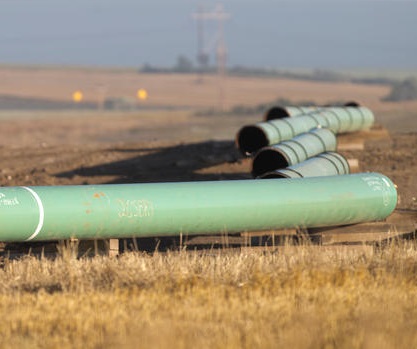Canada’s standard of living is suffering because of the seemingly perpetual pipeline controversy and especially because of the delays.
No, it is not merely the delay in construction that is causing problems, but it is also delays in expanding our oil exports to the world and being ambivalent to foreign investment. Canada’s problem results, in part, from the damaging effects of the Canadian dollar, our prices of exports versus imports, and the faltering investment into our country.
Prices for many of Canada’s exports are depressed now including oil, gas, and a few other minerals. Our biggest export is, in fact, oil, including oil sands’ bitumen. These valuable exports pay for our imports of food and other consumer goods.
Western Canada Select (WCS), is the benchmark oil blend priced at Edmonton refineries, now selling at a discount to West Texas Intermediate (WTI), the US standard. Recently, the spread between the two standards widened from about $5 to over $15 per barrel, meaning less money comes into Canada from exporting crude oil to the United States. This is despite world and US oil prices rising nearly twenty dollars in under a year.
Canada’s balance of trade has been chronically negative for several years, pressuring the loonie down as a result. Balance of trade is the total value of exports minus imports, also called the trade surplus or deficit. Higher prices or volumes, or both, increase the total value of exports.
The cancellation of the Energy East pipeline and the federal disapproval of the Northern Gateway pipeline leave just two or three alternatives to deflate our artificially low price ‘bubble’.
If the TransMountain expansion proceeds, it will alleviate the surplus of both conventional and oil sands product, reducing the WCS-WTI spread. It will also boost the volume exported at a much higher international price (higher than WTI). Even better, if Enbridge’s Line 3 and TransCanada’s Keystone Express are built, there will be far more exports, albeit just to the US.
Of course, other things also affect exchange rates. Among the most important are short and long term borrowing and direct foreign investment in assets and companies, shorter-term borrowing and investor capital flows in response to interest rates and finally the perceived risk and reward of parking money in Canada for investment. Interest rates are still depressed to foster reluctant investments.
Furthermore, Canada’s investment appeal to foreigners has decreased in recent years to a large extent as a result of the TransMountain delays. Fewer investors, and fewer euros, yuan, yen, and pounds competing to buy our dollars or assets thus impedes employing Canadians and prevents alleviating, in part, housing unaffordability problems in our large cities.
So, trade and investment are suffering from negative perceptions of Canada’s investment climate and ability to get projects done, and from higher taxes versus the United States.
If we increased our exports and the loonie rose to US $0.90, our standard of living would be about 14% higher than what we have today with a loonie at US $0.78. Think what you could do with 14 percent more purchasing power. If the WCS/WTI spread contracts and our trade deficit shrinks as oil flows to markets, and investors find us more inviting, it could happen.
Canadians must tell their leaders that they want a more vibrant, dynamic and viable economy and it is up to those leaders to make it happen.



